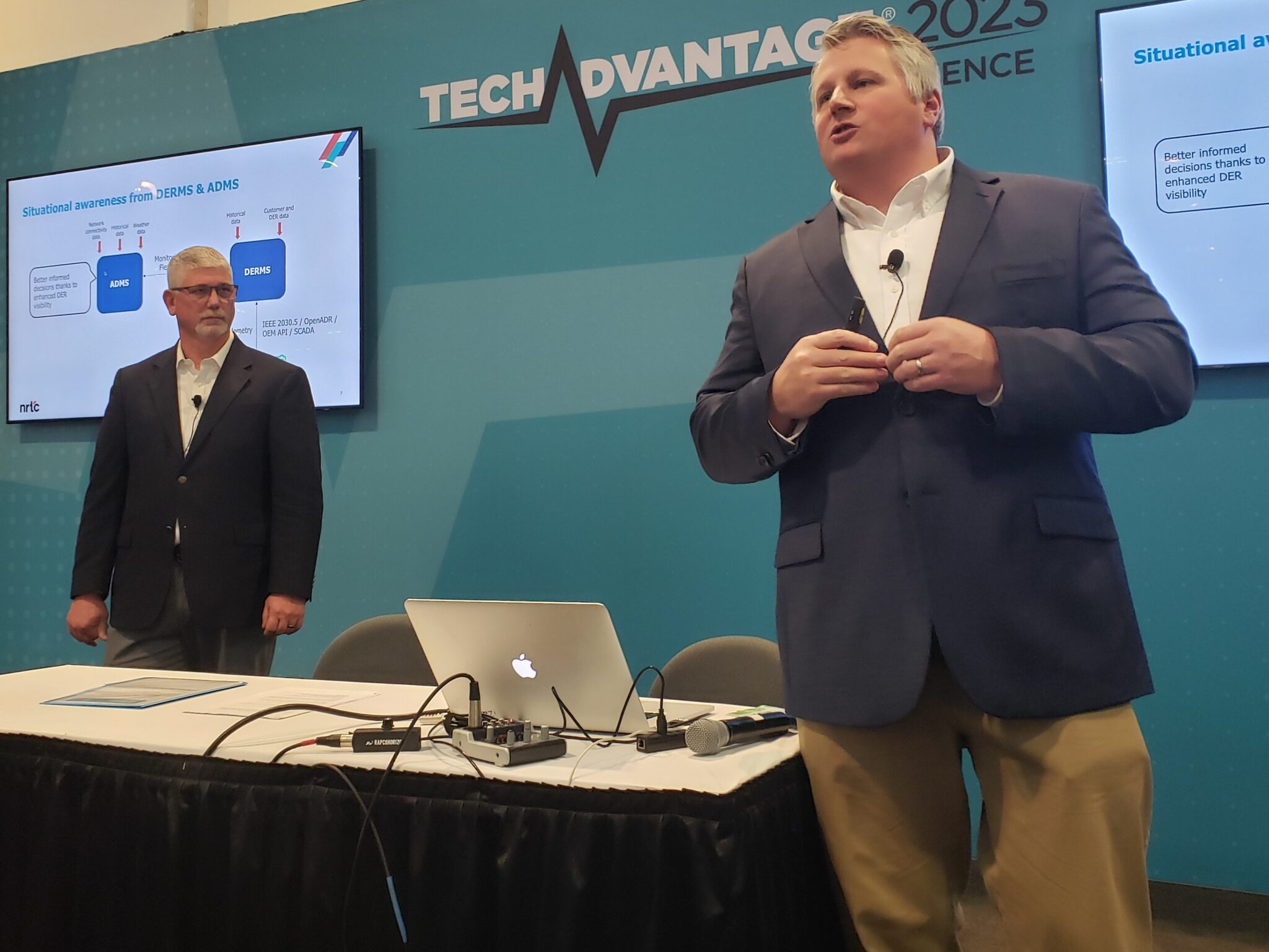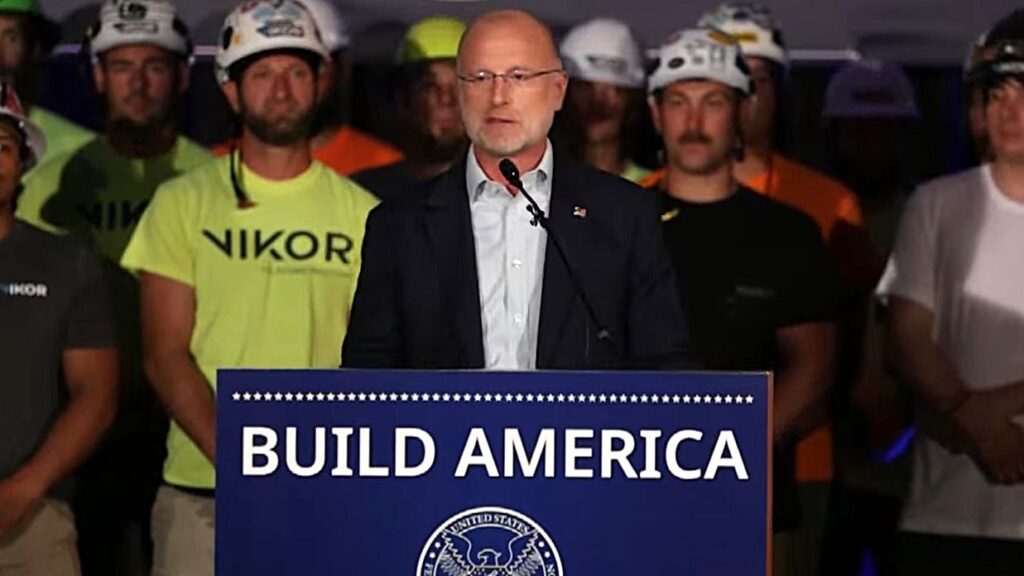TechAdvantage Notes: Benchmarking, DERMS/ADMS, Fiber Tips and More
Randy Sukow
|

The recently concluded TechAdvantage conference in Nashville presented its wide array of technical sessions to address cooperative goals and operational needs. The word “typical” does not work next to the words “electric cooperative.” Co-ops are looking for technology solutions, but the diverse list of solutions they need tends to get long.
For example, there continues to be considerable interest in the “Rural Electric Cooperative Broadband Benchmarking Report” that NRTC and NRECA released in 2022. One reason why NRTC members find the data useful is because it is the product of the experiences of 88 different cooperatives that already have built broadband networks under a variety of economic, competitive, geographic, and regulatory conditions. It is a useful resource for any electric utility still exploring broadband projects.
NRTC’s Keith Sinclair, director, Broadband Development, and NRECA’s Paul Breakman, VP, Cooperative Business Solutions, reviewed the report during a TechAdvantage session. They concluded by looking at a list of the 14 issues that most commonly plague a broadband construction project, from “Reporting and Compliance” to “Securing Funding” to “Working with Contractors.” The 88 report participants ranked each of the issues from most to least difficult.
“Reusing the phrase, ‘If you’ve seen one co-op, you’ve seen one co-op,’ the fun fact here is that for every category some listed it as the hardest thing as well as the easiest thing,” Sinclair said. “That’s a perfect example of the variation we saw.”
***
Any high-tech arena is going to have its share of “alphabet soup,” as NRTC’s Patrick Jordan, director, Technology Planning, and Milt Geiger, VP, Smart Grid Solutions (pictured above) said during a “Tech Talk” session on the TechAdvantage exhibit floor. Geiger and Jordan described the differences between utility software platforms, DERMs (distributed energy resource management system) and ADMS (advanced distribution management system).
Those familiar with NRTC’s work with AutoGrid Systems know that DERMS provides central control of many types of electrical loads, including thermostats, water heaters, electric vehicle chargers and others. ADMS, Jordan said, could be termed as “the next system after SCADA.” It is the suite that will coordinate the many smart grid functions, including AMI, outage management, volt/var and microgrids “all under one case.” The goal is to integrate the two platforms to help the entire utility operation run more smoothly.
“There are certain things that are one plus one equals three,” Geiger said. “You’re getting a DERMS system that might pay for itself on demand response, but by bringing it into ADMS, you are going to do a lot more.”
***
Great Lakes Energy in Michigan is in the sixth year of a long-term fiber build. Scott Blecke, VP Engineering and Phil Mudge, head of Broadband Development led a TechAdvantage session where they offered advice to electric utilities contemplating fiber projects of their own.
“We took the approach that we build with excess capacity beyond what we need today,” Blecke said. “There’s going to be use cases in the future, whether that’s deployment of a 5G network … whether that’s I want a completely air-gapped network to manage EV charging … I want to do demand response, whatever those use cases are going to be.”

Blecke acknowledged that other cooperatives will approach fiber differently, depending on their business conditions, but that Great Lake Energy believes that fiber investments must be valuable 20, 30 or 40 years into the future, and that must support more than consumer broadband or “we’re selling ourselves short,” he said.
Mudge advised co-ops not to trust their GIS information that indicates where their lines, poles and meters are. Some will find that they have information that is decades out of date. “What we looked at it as an opportunity to upgrade and to refresh all of that information about our physical plant, and both our aerial and our underground assets,” he said. Great Lakes Energy directs its work crews to document any GIS errors it finds.
Going into the fiber project, the co-op thought that some of its lines ran on the north side of a certain road, putting its assets in the jurisdiction of the U.S. Forest Service. It learned that it’s lines were, in fact, on the south side of the road, resulting in a substantial change in it’s federal licensing obligation. In another cases, they found that Great Lakes had no record of some poles that it owned. “What was really interesting is that not only were some of those poles not in our GIS, but a third party was attaching on,” Mudge said.
***
A priority for Northern Neck Electric Cooperative in Virginia has been to improve its engagement with its members and to be a good community partner. “Nobody really wants to pay the power bill,” said President and CEO Bradley Hicks. “And sometimes that’s the only opportunity you have to engage your members, or when there’s an outage … Those aren’t the types of engagement we’ve really want to focus on.”
So the cooperative has conducted regular surveys to monitor member preferences more closely. Among the questions it has asked is how members prefer the co-op to contact them. The result is that a solid 67 percent majority prefer phone contact; 75 percent of those over 65 want to get a call. Email contact was a distant second at 32 percent. Text messages and encouraging people to use a mobile app were downright unpopular.
But the most efficient way to reach a large number of people by the telephone is through robocalls, which many find annoying. In fact, the FCC has devoted considerable effort in recent years to curtailing nuisance robocalls. So, does Northern Neck use them?
No, they don’t. In fact, said Kyle Allwine, manager, Public Relations, he and Hicks are among those who return phone calls and Facebook messages personally when a storm creates outages. “Last January we had a just an insane storm. I think I fielded 2,000 private Facebook messages, 200 phone calls and I can’t even tell you how many Facebook comments,” he said. “But that was worth it for us to accomplish our mission so that our linemen had the support that they needed.”

